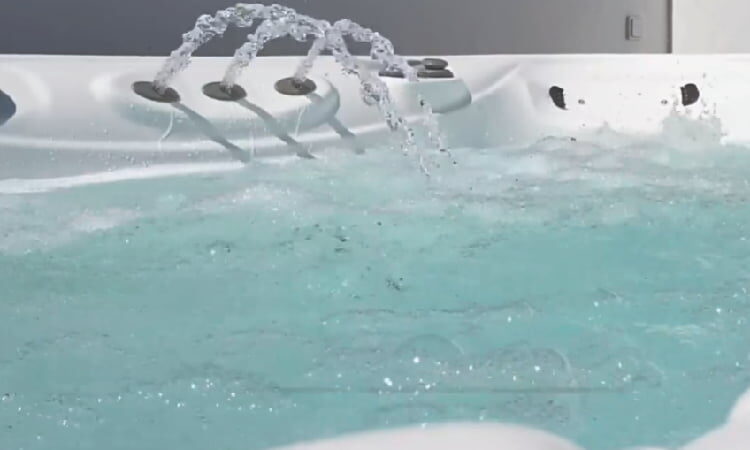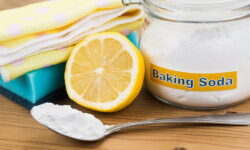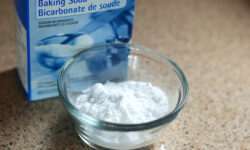Your hot tub’s low total alkalinity level can cause health issues like skin dryness and other irritations. It can also potentially damage your hot tub. Knowing how to raise alkalinity in a hot tub is important in prolonging its life.
Baking soda (sodium bicarbonate) and soda ash (sodium carbonate) are good options for increasing alkalinity in a hot tub. Adding one tablespoon per 100 gallons is a rule of thumb. There are also alkalinity increasers you can buy in the market.
Continue reading to understand why a hot tub’s alkalinity fluctuates. I will provide the steps to increase the total alkalinity of your tub. I will also discuss if it is safe to soak in a tub with low alkalinity.

Quick Navigation
Why is my Hot Tub Alkalinity Always Low?
Various factors contribute to the decrease in your hot tub’s alkalinity. These include acidic water, rainwater, contaminants, chlorine tablets, and excessive use of alkalinity reducers.
The more you use your hot tub, the faster the alkalinity level will decrease. Whether you like it or not, you bring pollutants to the water every time you soak in the tub.
Human body pollutants include sweat, body oils, and even urine. Your body fluids can alter the chemistry of the water, dropping its alkalinity.
Acidic Water
Your tub’s water will become highly acidic over time. This problem is due to various chemicals that might mix with the water. The hot tub’s alkalinity drops when the water becomes highly acidic.
You may have heard that some people pour muriatic acid into their hot tub to help balance the water chemistry. It does work. However, adding too much muriatic acid can cause the alkalinity level to drop significantly.
Rainwater
Exposing your hot tub to rainwater can also decrease your hot tub’s alkalinity. The natural acidity of the rainwater can cause an alkalinity drop. You usually face this issue if you have an outdoor hot tub.
The temperature differences between the hot tub’s water and rainwater can also reduce alkalinity. If you have an outdoor hot tub, it is best to cover your tub to protect it from rainwater.
Contaminants
Whether you like it or not, you contaminate your hot tub’s water every time you dip yourself and relax. Your sweat and body oils can modify the water chemistry, causing the alkalinity to drop. Your swimwear may also bring chemical residue into the water.
Can you avoid or minimize the contaminants you bring into your hot tub? You cannot avoid it for sure. However, taking a good shower before soaking in your tub may help reduce the contaminants.
Chlorine
Chlorine is an effective sanitizer. Using chlorine tablets is an easy way to maintain and sanitize your tub. However, the alkalinity of your hot tub will also be affected.
The chlorine tablets can lower the pH level of your hot tub. When the pH level of your hot tub drops, the alkalinity also decreases.
Maintaining a 3 to 5 mg/l in your hot tub at all times is highly suggested. If the chlorine content of your hot tub is more than this, you will likely end up with low pH and alkalinity.
Alkalinity Reducers
Hot tub owners use alkalinity reducers such as muriatic acid or other acid-based products when the tub’s alkalinity is high. Uncontrolled use of alkalinity reducers may also result in too low alkalinity.
When adding alkalinity reducers, you must constantly check the alkalinity level. You can purchase test strips to test your hot tub’s total alkalinity.
Can You Go in a Hot Tub with Low Alkalinity?
It doesn’t kill you if you dip yourself in a hot tub with low alkalinity, but it may cause you some discomfort. Soaking in a hot tub with low total alkalinity can potentially cause skin irritations. You would likely get dry, itchy skin after a good soak in your hot tub.
Moreover, it can also irritate your eyes and nasal passages due to the high acid content in the water. Have you ever swam in a pool and irritated your eyes? If you did, you have already experienced the effect of low alkalinity.
Therefore, if you already know that your hot tub’s alkalinity is low, correct the problem before you use it again. Baking soda and other soda-based products can help you increase your hot tub’s total alkalinity.
Ways to Fix Low Alkalinity in My Hot Tub
Baking soda and soda ash are the common solutions to increase your hot tub’s alkalinity. They are effective because they are alkaline substances. They can alter pH levels when they mix with acidic water.
Which one is better? They both help boost your hot tub’s alkalinity. However, if your tub’s pH level is okay, you can use baking soda. Soda ash can significantly increase both the pH and alkalinity levels.
1. Baking Soda Technique
Baking soda is a safe way to increase your hot tub’s alkalinity. It is a substance that you can easily acquire. You may have an abundance of it in your kitchen.
Take a look at the steps for applying baking soda to your hot tub below:
What you need:
- Baking soda
- Bucket
- Water
- Stirrer
- Test strips
- Tablespoon
Step 1: Confirm the water capacity of your hot tub by checking its manual. If you lost your manual, feel free to contact the manufacturer.
Step 2: Check the total alkalinity level of your hot tub is low by testing it with a test strip or a digital tester. The ideal total alkalinity level is 80 to 120 parts per million (ppm).
Step 3: Also note the pH level of your hot tub. The ideal range is 7.2 to 7.8.
Step 4: Calculate the amount of baking soda to add. The rule of thumb is to add one tablespoon of baking soda per every 100 gallons. Thus, if your tub holds five hundred gallons, you must add five tablespoons.
Step 5: Dissolve the baking soda properly using your bucket of water and stirrer, then pour the solution into the tub.
Step 6: Turn on the hot tub’s jets and let the water circulate for a couple of hours.
Step 7: Test the alkalinity and pH level again after six hours. You can add more baking soda to reach an acceptable alkalinity level and pH.
2. Soda Ash Technique
Soda ash is another alternative to increasing the alkalinity level of your hot tub. This method is ideal if you increase your hot tub’s pH and alkalinity levels. Otherwise, use baking soda if your tub’s pH level is okay.
Take a look at the steps for applying soda ash to your hot tub below:
What you need:
- Soda ash
- Bucket
- Water
- Stirrer
- Test strips
- Tablespoon
Step 1: Determine how much water your hot tub holds. You can refer to the tub’s manual to get the information.
Step 2: Test your hot tub’s pH and alkalinity levels using test strips or digital testers. The ideal ranges are 80 to 120 ppm for the alkalinity and 7.2 to 7.8 for the pH.
Step 3: Add the same amount as you would with baking soda (1 tbs per 100 gallons).
Step 4: Ensure to completely dissolve the soda ash in a bucket of water before pouring it into the tub.
Step 5: Allow the solution to circulate for a couple of hours. Ensure that you turn on the hot tub’s jets.
Step 6: Re-test your hot tub’s alkalinity and pH level six hours after adding the soda ash solution. Add more soda ash as required until you achieve the acceptable ranges.
3. Other Alkalinity Increasers
You can also use alkalinity boosters, such as Alkalinity Increaser from Grit Commercial and Alkalinity Up from SpaChoice. These products come as powder or granules, which means they need to be dissolved.
These products are either baking soda or soda ash marketed in bottles. Therefore, the amount to add could be similar to the amount you add when you use generic baking soda.
The alkalinity increaser’s bottle must also provide the correct amount to add and some instructions.
How Long Does it Take to Raise Alkalinity in a Hot Tub?
The total alkalinity level of your hot tub does not increase straightway after you add the baking soda. Some say that 3 to 4 hours is enough to increase the alkalinity level of the hot tub.
However, it is best to allow six hours for the chemical reaction to complete. You can re-test the alkalinity level at this period to determine if you need to add more alkalinity boosters.
What Happens if Alkalinity Level is Too Low?
Your hot tub will face numerous problems when the total alkalinity is low. These issues include corrosion, algae build-up, pH drop, irritations, and tub damage.
Corrosion
Low pH and alkalinity levels create corrosive water. When the water in your hot tub becomes corrosive, the metal surface will suffer from corrosion.
Corrosion is still an issue even if you have a fiberglass tub. It may not cause a direct issue with the fiberglass surface, but it can cause an issue with the pump and its filter.
Your hot tub’s pump and filter are costly components. Therefore, ensuring that the total alkalinity level is acceptable is a must.
Related Read: How to Clean a Hot Tub Filter Using Vinegar
Algae Build-up
Algae can easily build up when your hot tub’s alkalinity is low. As a result, your tub’s water becomes green. I am sure that not many people would love to soak in a green-watered hot tub.
pH Drop
Your hot tub’s pH level can significantly fluctuate if the total alkalinity is low. When the pH is low, the water becomes very acidic. Highly-acidic water can cause issues with your tub and yourself.
Irritations
You will likely experience skin itchiness and dryness when you dip in a hot tub with low total alkalinity. Aside from this, you might hurt your eyes and nasal passages due to the harshness of the water.
Tub Damage
Generally, hot tubs with frequent low alkalinity can suffer from cracking, etching, and delamination. Additionally, your hot tub may also start to show stains.
These issues cost you more money. Therefore, avoid them by constantly monitoring the alkalinity level of your hot tub. As experts say, “prevention is better than cure.”
Regular water replacement may help you ensure healthy water in your hot tub.
Frequently Asked Questions
Total alkalinity measures all the alkaline substances in the water. It is also considered to measure how capable the water is of resisting pH fluctuation. The alkali content of the water is responsible for neutralizing the acids.
pH and alkalinity may be closely related, but they are different. pH is referred to as the ‘power of hydrogen.’ pH scale measures how acidic or basic the water is. On the other hand, alkalinity measures the capability of the water to withstand a pH drop.
The acceptable range of total alkalinity is 80 and 120 ppm. If your hot tub alkalinity drops below 80 ppm, you must address the problem immediately. Failure to boost the alkalinity of your hot tub can cause issues with your hot tub and irritations to your skin and eyes.
Experts suggest you conduct an alkalinity level test once or twice weekly. Testing is not difficult because there are test strips you can buy in any spa or pool store. Regularly testing your hot tub’s alkalinity helps you maintain healthy tub water.
Conclusion
Knowing how to raise alkalinity is a must for hot tub owners. It is not very difficult to do, and not very expensive either. Adding one tablespoon of baking soda, soda ash, or other alkalinity booster products for every 100 gallons of water will do the trick.
You need to ensure that the alkalinity booster is properly dissolved before adding it to the tub water. After the treatment, you must allow at least six hours before you re-test the alkalinity level of your tub. You can add more baking soda until you reach the proper total alkalinity.



![What is a Stabilizer in a Hot Tub? [Types of Stabilizers] what is a stabilizer in hot tubs and how does it work](https://hottubtales.com/wp-content/uploads/2023/10/what-is-a-stabilizer-in-hot-tubs-and-how-does-it-work-250x150.jpg)

![Can You Over Shock a Hot Tub? [What to Do if You Did?] can you over shock a hot tub](https://hottubtales.com/wp-content/uploads/2023/10/can-you-over-shock-a-hot-tub-250x150.jpg)
